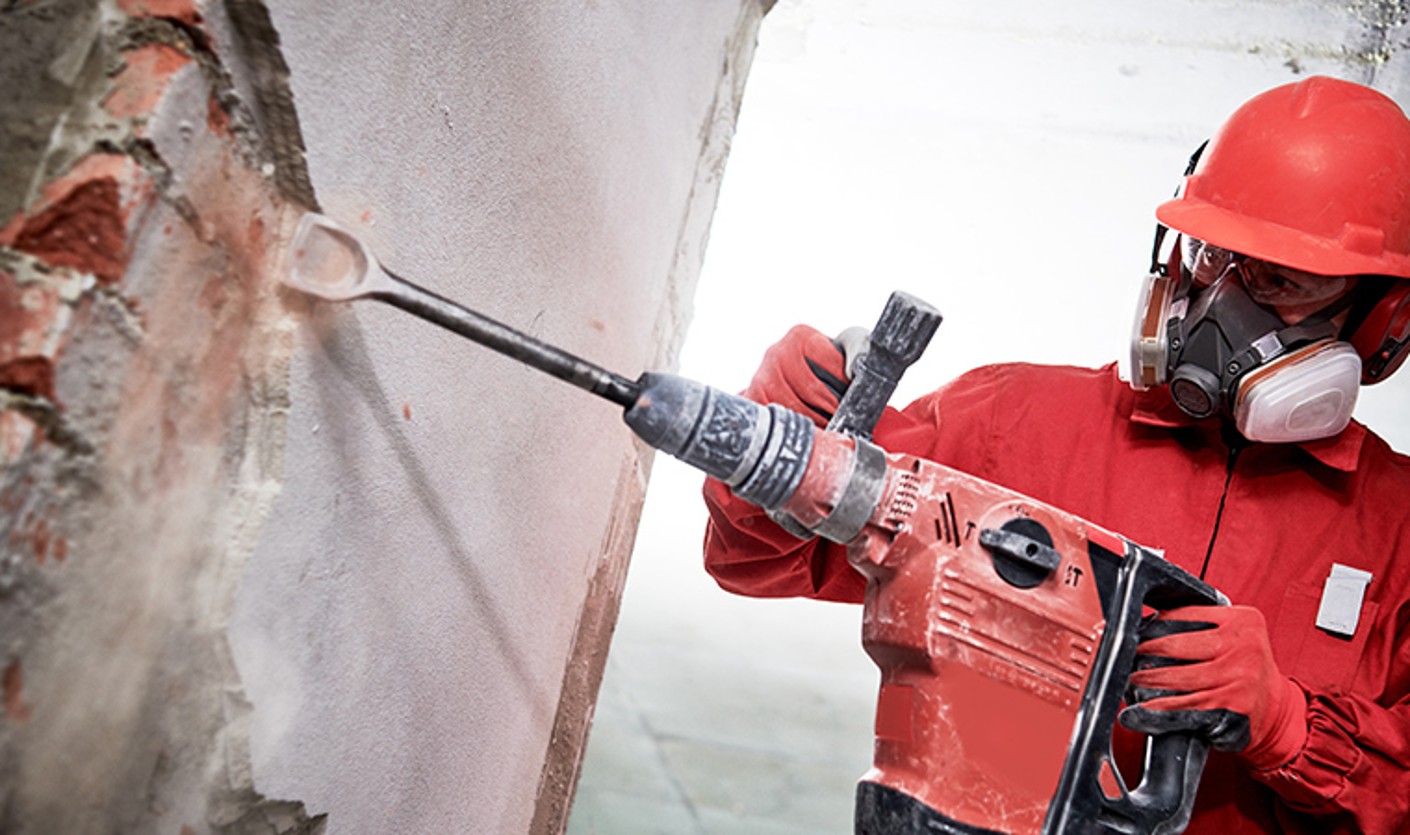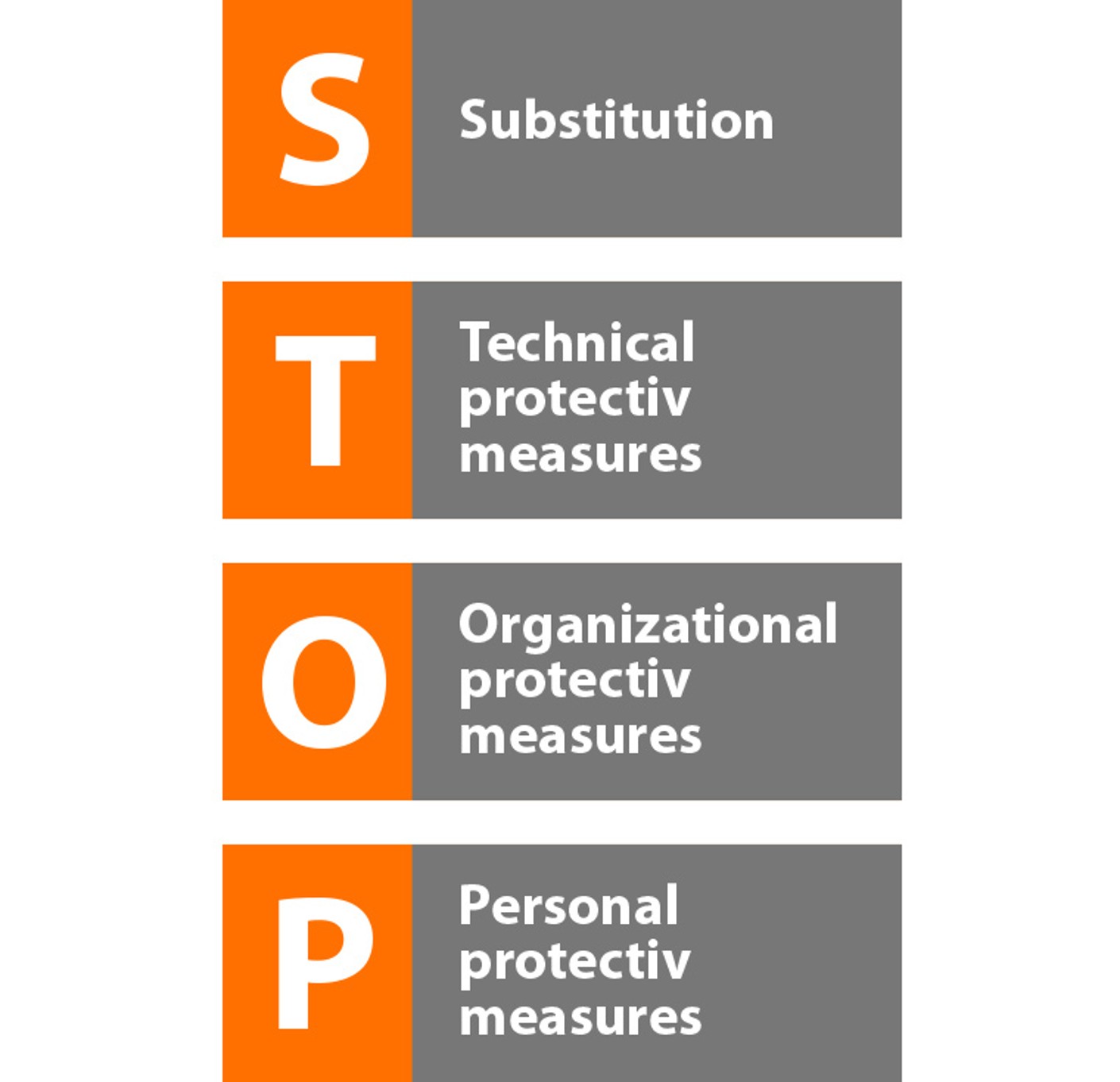Vibrations during cutting and grinding work – Knowing the risks

Vibrations – Huge health risks
Abrasive cutting can shake you to your bones – quite literally – and has a high chance of impacting workers’ health if your workshop doesn’t have the right occupational safety measures in place. In order to ensure that you and your employees are not harmed by hand/arm vibrations, there are a few things you need to remember when working with equipment such as orbital sanders on a daily basis. Vibrations are transferred to the hand/arm system via the hand, and can cause bone and joint damage, circulation problems or even neurological conditions. But not all vibrations are born equal – the extent to which they place strain on your body and the resulting impact on your health vary depending on the following factors:
- The exposure time
- The strength of the vibrations
- The frequency of the vibrations
- The work method/activity in question
On the next page, we will provide you with an overview of the current laws regarding this issue and how you, as the craftman in charge of your workshop, can improve the safety of your employees even further with a risk assessment. We will also introduce the STOP principle and explain in detail what it’s all about.
The legal factor: Important laws on hand/arm vibrations

Back in 2002 – almost two decades ago now – legislators recognised the dangers associated with vibrations in the work place and adopted the EU Vibration Directive into law. For you as a craftman and supervisor, this means that you need to determine and assess the potential risks associated with the effects of vibrations at the workstations in your workshop. Once this is done, you are responsible for introducing suitable preventive measures, and must ensure that your colleagues undergo regular occupational safety medical check-ups. The applicable regulatory framework is currently provided by the German Occupational Safety Ordinance for Noise and Vibrations (Lärm- und Vibrations-Arbeitsschutzverordnung/LärmVibrationsArbSchV), which came into effect on 6 March 2007. This was last amended by Article 5, Paragraph 5 of the Ordinance on 18 October 2017, and implements two European directives on occupational safety on the national level within Germany:
- 2003/10/EC “Noise”
- 2002/44/EC “Vibrations”
In order to make it easier to apply these requirements in practice and introduce concrete measures, Germany’s Committee on Work Equipment (Ausschuss für Betriebssicherheit) has drawn up its own Technical Rules for Noise and Vibrations (Technische Regeln für die Bereiche Lärm und Vibration/TRLV). As the craftman in charge of your workshop, you are legally required to follow these technical rules.
How to recognise and assess risks correctly

In theory, occupational safety is simple, almost intuitive. For a good risk assessment, you and your employees need to recognise the exposure (duration of the risk) at an early stage, then systematically reduce it. In order to ensure that you do this not just correctly, but with complete success, your assessment should always be:
- Activity-related
- Machine-related
- Workplace-related, and/or
- Person-related
The law defines clear thresholds that constitute legal requirements for your workshop: In accordance with European directive 2002/44/EC, the following trigger values and exposure thresholds apply for hand/arm vibrations:
- Trigger value A(8) = 2.5 m/s2
- Exposure threshold A(8) = 5 m/s2
Correct prevention – What you need to know
Ideally, you should be able to prevent or reduce strains be implementing clever preventive measures. This is what you need to do:
1. Determine and assess the risks and strains to which your employees are exposed at their workstations.
2. Define appropriate technical and organisational measures that can be used to minimise these risks and strains.
3. Adhere strictly to the prescribed exposure thresholds.
4. Give your employees regular training on the risks and strains involved in their work.
5. Take a careful and responsible approach to your role as the supervisor and manager of your workshop, and make sure that your colleagues undergo regular occupational safety medical check-ups.
6. Document all your measures – and any incidents that occur.
Measuring vibrations correctly – Where to do it
In order to ensure that you don't have to rely entirely on any information provided in the machine description, you can also use a triaxial accelerometer to provide reliable figures for hand/arm vibrations.
Tip: Make sure you always measure hand/arm vibrations at the handles of the machine in question, such as an angle grinder. Before you start, use a clip or an adhesive strip to attach the triaxial accelerometer to the machine handle.
Next, calculate the total vibration value (ahv) using the frequency-assessed accelerations for all three vibration directions. This will give you the vector product for the three measurement directions.
Note: In order to ensure that your measurement values are valid and you can use them to draw reliable conclusions, make sure you always carry out your measurements during a typical work process for the workstation in question.
STOP – The name says it all

The “STOP principle” stands for the order of priority that you and your company are also required to follow when it comes to defining and implementing safety measures.
STOP stands for:
S - Substitution
T - Technical safety measures
O - Organisational safety measures
P - Personal safety measures
As the craftman in charge of the workshop, this means you need to implement each measure as follows:
- Design your work processes in such a way that there are no risks involved. Check that the equipment you are using is fully functional and is not a source of potential hazards (i.e. make sure all your discs are intact).
- Eliminate any risks, or take measures to reduce them or install protective equipment (e.g. covers on angle grinders, sound protection).
- Take a look at the strains your colleagues are subjected to during cutting and grinding work. Can you make their work processes shorter or more efficient? Can the process be adjusted to reduce their exposure to these strains? Could you use different technology to reduce the strain?
- Check your employees’ personal protective equipment, making sure that all the relevant items are both in place and fully functional. Are there any cracks in their goggles? Are their mouth and nose masks still fully functional? Are their gloves intact? Does their hearing protection fit, and does it provide sufficient protection?
By applying the STOP principles, you can reduce risks at your work place and play an important role in improving the health, safety and well-being of your employees.
